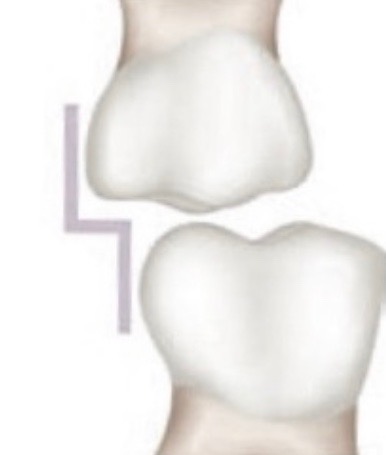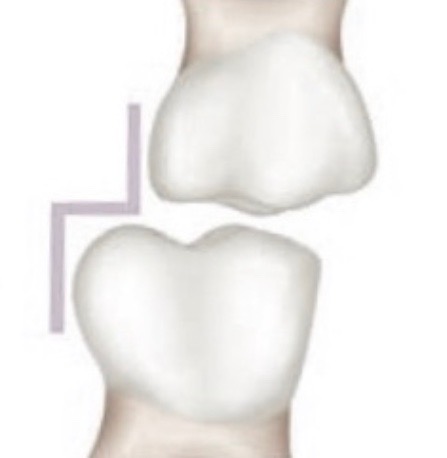Class I (Neutrocclusion)
Normal front to back relationship between maxillary and mandibular teeth
Molar relationship— M/B cusp of max. 1st molar occludes in the buccal groove of the mand. 1st molar
Canine relationship— Max. canine fits between mand. canine and 1st premolar
Facial profile— Orthognathic

Class II (Distocclusion)
Mandibular teeth posterior to normal position in relation to maxillary teeth
Molar relationship— Buccal groove of the mand. 1st molar is distal to the MB cusp of the max. 1st molar by the width of a premolar. If distance < width of a premolar, should be classified as tendency toward Class II
Canine relationship— Distal surface of the mand. canine is distal to the mesial surface of the max. canine by the width of a premolar. If distance < width of a premolar, should be classified as tendency toward Class II
Facial profile— Retrognathic (maxilla protrudes; mand. appears weak and retruded)
Class II, Div. I
Mandible is retruded and ALL max. incisors are protruded
(conditions that may occur: deep overbite, excessive overjet, short
mandible or short upper lip)
Class II, Div. II
Mandible is retruded and 1 or more max. incisors are protruded
(conditions that may occur: max. laterals protrude while both
central incisors retrude, crowded max. anterior teeth or deep
overbite)
Subdivisions— May have one side Class I and one side Class II

Class III (Mesiocclusion)
Mandibular teeth anterior to normal position in relation to maxillary teeth
Molar relationship—Buccal groove of mand. 1st molar is mesial to the MB cusp of the max. 1st molar by the width of a premolar. If distance < width of a premolar, should be classified as tendency toward Class III
Canine relationship— Distal surface of the mand. canine is mesial to the mesial surface of the max. canine by the width of a premolar. If distance < width of a premolar, should be classified as tendency toward Class III
Facial profile— Prognathic (mandible protrudes; lower lip protrudes

Malocclusion
Any deviation from normal
Terminal Plane Relationships (Primary Molars)
Flush Terminal Plane (most common)
Distal surfaces of the 2nd primary molars are in the same vertical plane
Leads to Class I (possibly Class II)

Mesial Step (2nd most common)
Distal surface of the mand. 2nd primary molar is mesial to the corresponding max. molar
Leads to Class III (possibly Class I)

Distal Step (least common)
Distal surface of the mand. 2nd primary molar is distal to the corresponding max. molar
Always leads to Class II

